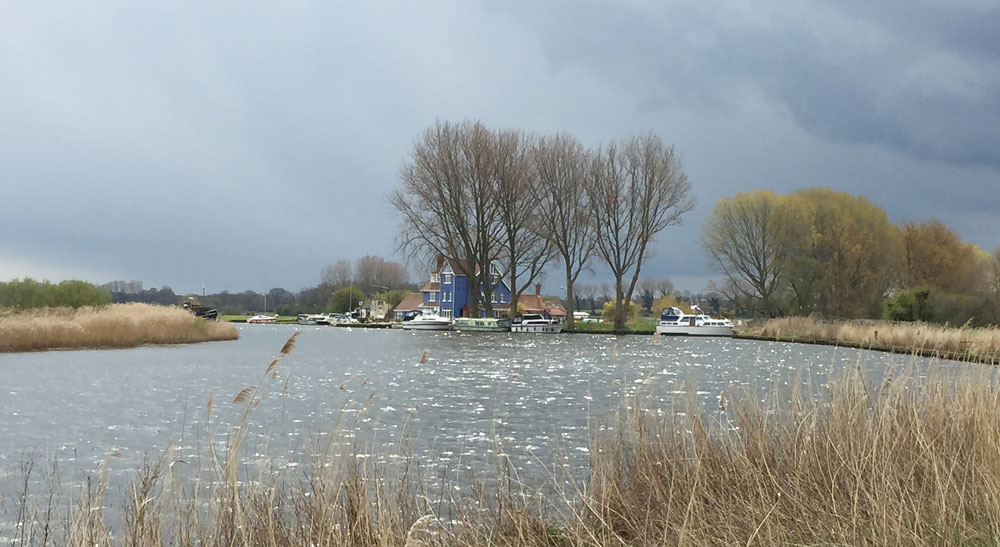Norfolk Walks | The Best Way to Explore the County
 Norfolk Walks – Storm clouds over the River Yare on the Wherryman’s Way footpath.
Norfolk Walks – Storm clouds over the River Yare on the Wherryman’s Way footpath.
Being out in the fresh air during the lockdowns, either cycling, jogging or walking, has been beneficial to people’s physical and mental health. I took full advantage of the right to go outside to exercise, and I am sure that taking walks helped me cope with the solitary existence we all had to endure.
Walking for pleasure is something I enjoy more in later life, with Norfolk walks being a firm favourite. The eight-mile walks I used to take are a little out of my comfort zone these days; five miles is now more to my liking – fewer aches and pains in tired joints the next day. So, how do I, and thousands of others, benefit from rambling in the Norfolk countryside, and why is walking by the sea or a river (so-called blue space walking) more relaxing than in woodland or open country? Research has established that most walkers experience the calming effect of walking near water.
Walking Solo
I often walk unaccompanied. That makes me more observant and aware of the sights and sounds of nature. It also provides an opportunity to think about times past, remembering loved ones that are no longer with us, family holidays when the children were young, significant problems met head-on and overcome, regrets, failures and successes. Does that sound maudlin? That isn’t how I feel when walking; I am very content and relaxed when in the countryside, close to nature.
Walking on my own is not through choice; I love being accompanied, but I am a very early riser. The enthusiasm for early starts is not a trait shared by everyone. When I have a walking companion, being able to share thoughts and observations is a joy.
Wherryman’s Way
The photograph above was taken in late April on the Wherryman’s Way. As I walked, I was treated to a flying display by several Swifts feeding on the wing. They don’t stay with us for long; after breeding, they head back to Africa in July when the conditions for long-distance flights are best.
When spring arrives, nature enthusiastically sets about creating new life after a hard winter. We are so lucky in Norfolk because many walks pass close to wildlife reserves managed by the Norfolk Wildlife Trust and the RSPB. The birdsong and the sounds of waterfowl seem somehow more enthusiastic when spring is in the air; perhaps that is due to the excitement and anticipation of the warm summer days to come.
An early start is preferable when walking because you are likely to see deer or even a fox on its way home after a night’s hunting. Walking in April or early May, you might be one of the first to hear the call of the cuckoo. Cuckoos are not as numerous in our countryside as they once were, but some of these hardy flyers arrive in the UK to breed, having flown from their winter home in Africa.
Winter Walking
North Norfolk’s coast is beautiful at any time of the year, so get out the walking boots and enjoy a winter’s day on the Norfolk Coast Path. Wrap up warm and come when the north westerlies blow, and the clouds skitter across the sky like the sails of racing yachts. Watch the waters being whipped up and spume dancing off the crests of the waves. The fine sand that blows across the beaches will sting your face, and you will taste salt on your lips. You might never feel as cold again anywhere, but what a rewarding experience you will have had.
Norfolk’s Long Distance Trails with links to information sites: